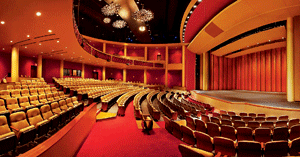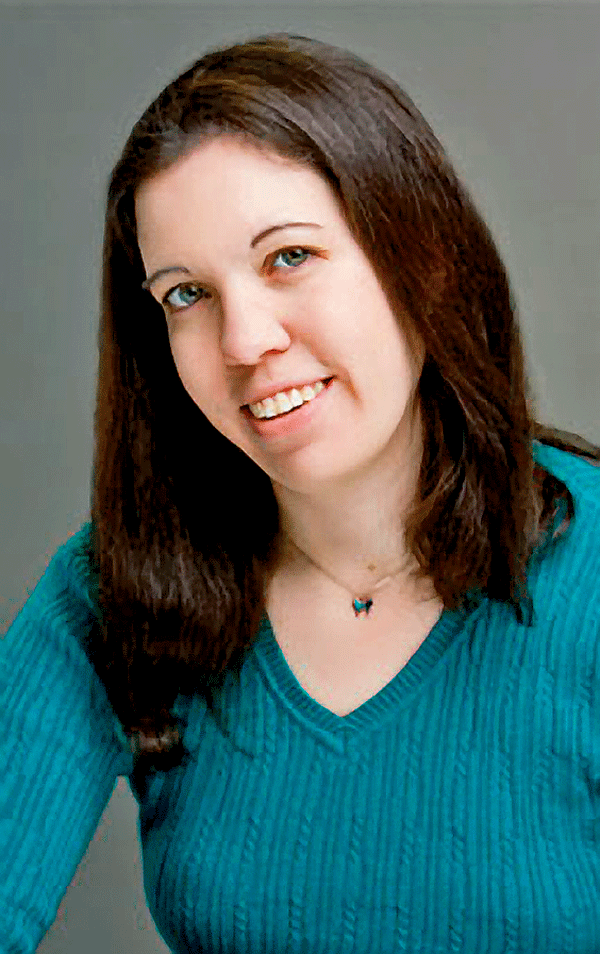Merging Theater and Engineering
When Kimberly Corbett ’01 enters a theater to see a performance, she dreams of being caught up in the music, the drama, or anything but the reality of hidden microphones, motors, and trapdoors.
“Unfortunately, I have a hard time doing that,” she says, with the trace of a playful sigh. “I’m looking for the wire and trying to figure out where the hinge is. It’s an entirely different experience in my head from that of most people going to the theater.”
Corbett, who holds an M.F.A. from Yale University’s School of Drama, combines her background and skills as technician, musician, and dancer in her role as theater consultant for Schuler Shook, an internationally recognized theater planning and lighting design firm with locations in Dallas, Chicago, and Minneapolis.
Located in the Dallas office, Corbett is one of only about 100 professionals with this position in the United States. The firm handles new construction, renovation, and restoration of live-performance venues ranging from 100 to 3,000 seats. Corbett meets with architects, engineers, acousticians, directors, and conductors to plan and equip performing arts spaces to best fit the particular needs and audiences of a location.
It’s a career Corbett says she didn’t know existed when, as a mechanical engineering major and theater minor at Lafayette, she made academic history by writing a senior honors thesis that combined the two areas. The paper, “Aesthetics and Regulation: Compromise in the American Theater,” explored how aesthetics of a production may run up against safety and regulatory concerns.
In her five years with Schuler Shook, Corbett has worked on a variety of projects, including the Foxwoods MGM Grand Theater in Mashantucket, Conn., Dallas City Performance Hall, and a number of colleges, universities, and houses of worship.
“From an aesthetic standpoint, one of my favorites is the Lyric Theater at the Plaza in Oklahoma City,” Corbett says, explaining that she helped adapt the once-abandoned 1935 movie house into a live performance space.
Right now, Corbett is working on about eight projects in various stages.
“Construction is a long process,” she says, explaining that it is necessary to meet with a huge array of people involved with the project, including the obvious and the not-so-obvious.
“We want to get insight into how everyone perceives what this building should be,” she says, “from those who are responsible for keeping the floors clean, right on up to university presidents.”
The merging of creative talent and energy with technical expertise has always been completely natural for Corbett, who enjoyed dancing and playing with Legos as a child. It also seemed natural to plan a career in engineering, with theater and dance as a hobby.
Corbett, who had worked as properties master for a high school production of Hello Dolly, says she was recruited by Lafayette theater director Michael O’Neill on her first day of class.
“Before I knew it, I was assistant manager for Lafayette’s production of My Fair Lady,” she says, adding that she worked on lighting and other technical tasks at the Williams Center for the Arts.

One of the projects Corbett recently completed is the Fine Art Auditorium for the University of Texas at Brownsville and Texas Southmost College.
After Lafayette, Corbett was master electrician for the theater department at Wagner College, New York City, where she also taught theater technology.
She gained even more experience in two summer internships. First, with the theater installation firm of Pook, Diemont, and Ohl in The Bronx, where she assisted with machine design work and the installation of new rigging equipment. She also worked for Theatre Projects Consultants, Inc. in South Norwalk, Conn.
Corbett occasionally moonlights as a set designer, master electrician, or occasional carpenter for local theater productions. In 2007, she received a Column Award for her work as set designer for the Garland Civic Theatre’s production of You Can’t Take It With You.
Corbett finds joy in both the aesthetic and the technical. In her world, the wires, winches, mountings, microphones, and everything else behind the scenes are essential. But she’s glad when audiences are simply mesmerized by the music, dance, or drama, oblivious of the trappings.
“That’s what we’re here for,” she says. “If we’ve done our job well, people won’t be thinking about that. They can focus on the production, which is really what it’s all about.”
